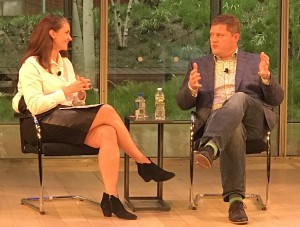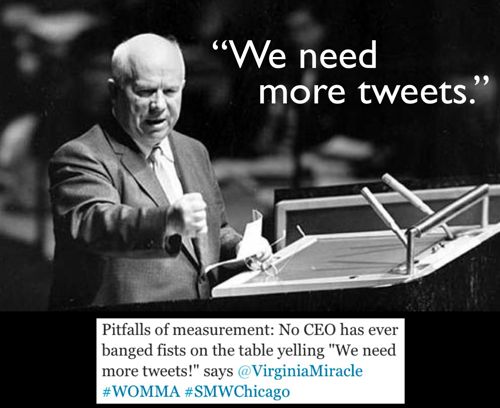
Wednesday night, we closed the book on another WOMMA Summit (disclosure: Spredfast is a governing member and I serve on the board). Having now had a few hours to reflect, there were some major themes.
Back to Advocacy – In session after session, we heard a focus from brands on meeting the needs not only of their X million fans, but creating content, experiences, and value for their hard core fans. One of the greatest examples of of approaching this came from Jackie Huba’s preview of her forthcoming 2013 book Monster Business. Lady Gaga’s marketing strategies focus on the 1% of her fans that want to have hyper-engaged relationships with her. The 6 Lessons of Gaga’s loyalty strategy are a fantastic reminder that this advocate strategy needs to drive platform choices instead of the tail wagging the dog.
Big Businesses are Dissolving the Social Pillar –Nestle Digital & Social Global Head (and WOMMA co-founder) Pete Blackshaw,Greg Gerik of 3M, and “Turbo” Todd Watson of IBM all shared the communications pillars of their organizations – none of which include standalone “social”. Instead of being a siloed initiative of a few trained marketers, social has permeated the way the company communicates on all fronts. This is a beautiful thought, but paying off on it requires investment in socially empowering hundreds of brand managers and SMEs, measuring the results of their efforts, and getting engagement and feedback data to the right places in the organization in a way that energizes the organization.
The Paid/Owned/Earned (and sometimes Shared) media model is here to stay as a meaningful model. No longer is there questioning about the validity or value of WOM that gets stimulated by ad dollars as the changing dynamics of what it takes for users of social platforms to actually see a connections’ recommendation. What does differ is how people are handling the integration of paid. Whether it is a new skill being picked up by the brand, executed through specialist agency collaboration, etc. – it is a skill set that must be added to your integrated WOMM team’s arsenal molto pronto.
Measurement is becoming more sophisticated and scrutinized. Many of the success metrics shared in sessions were about the “quick win”. This seems to be a result of the continued ROI pressure that social initiatives, along with the entire marketing mix face (backed up by data shared in the IBM CMO study. But elevating social activity to “business value” needs to incorporate the value of both the quick win and the long game for which social is so uniquely designed. Dr. Walter Carl shared some great guidance on how to look at the full value picture of social in a more holistic way – giving social credit for some of the “long game” communications objectives it achieves instead of short term sales, coupon redemptions, etc alone. We need to move beyond activity metrics and the “short game” and start thinking about how to give social credit for the more complex role it plays including soliciting feedback, cultivating offline WOM recommendations, and developing brand advocates who will spark to action in a crisis.
The Legal Socialpocalypse – The Summit closed with some amazing and well-timed reminders from lead legal counsel/cyberlawyers for Coca-Cola, American Express, and USAA. Reminders included the need for a higher level of rigor in terms of sharing rights-protected material to basic security in the way that social accounts are being managed by individuals in the company (personal logins to control corporate Facebook, anyone?). Above all, the guidance was to get legal involved early and often so they become involved in shaping a program instead of the late stage “no” guys.
It’s great to see so many companies that were early pioneers in social continuing to evolve and willing to share their lessons along the way for the benefit of the entire industry! For more details and sharable nuggets, visit WOMMA’s curated tweet and photo highlights the summit sessions: Day 1, Day 2, Day 3. To see more of the WOM that took place at Summit, check out the Summit Social Hub powered by FeedMagnet.



 Andrea Jung is a rockstar. Frankly, anyone who is a CEO of a company of Avon’s social and financial importance for more than a decade would be. Yesterday, I saw her give a public address on leadership to an audience of largely women. She was down to earth, inspiring, and highly quotable. A few of my takeaways and their applicability to social media below:
Andrea Jung is a rockstar. Frankly, anyone who is a CEO of a company of Avon’s social and financial importance for more than a decade would be. Yesterday, I saw her give a public address on leadership to an audience of largely women. She was down to earth, inspiring, and highly quotable. A few of my takeaways and their applicability to social media below: